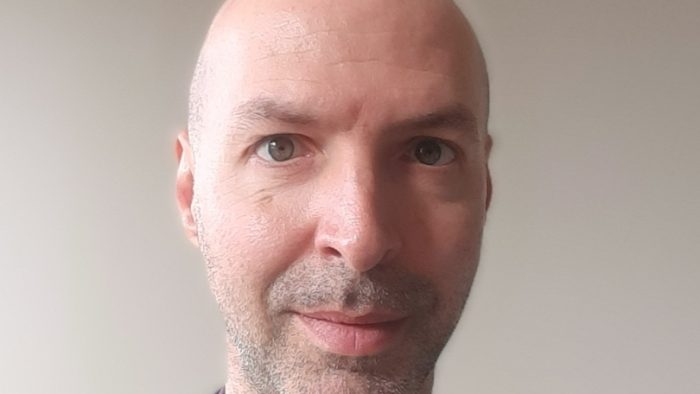Ehlers-Danlos Syndrome is a common co-occurrence with autism, but just what is it? Here we interview my friend with EDS to learn more.
One aspect of autism that I find particularly interesting is that itís almost always a package deal, a nifty little giftbox filled with little quirks and tied up with a bow. What I mean by this is that autistic people almost always have co-occurring conditions and diagnoses in addition to autism, and frequently itís these co-occurring conditions (rather than autism itself) that makes living a challenge for autistic people. In fact, co-occurring conditions are so common with autism that these conditions are often erroneously conflated with autism in a fallacy called diagnostic overshadowing, which I wrote about way back in 2019.
In todayís post, Iíd like to focus on one particular diagnosis thatís made much more frequently in autistic people than in the general population: Ehlers-Danlos Syndrome, or EDS for short. Ehlers-Danlos Syndrome affects the structure of the proteins comprising connective tissues, quite literally altering the structural integrity of the body. What makes the connection between autism and EDS so interesting is that autism refers to a difference in neurological development while EDS impacts connective tissue. Most of the conditions which co-occur with autism relate to the nervous system, which makes a certain degree of sense, so why does EDS show up so much more frequently in autistic people? (I will not answer this question in this post, but there are several interesting hypotheses out there if you have a biology background and would like to do some research on your own).
Of course, EDS and autism are separate conditions and you can certainly have one without the other. However, since so many autistic people also have EDS Iíve thought for a long time that it would be useful for my readership to learn a bit more about it. The thing is though, I do not have EDS myself, and so following the principle of ďNothing About us Without usĒ I would not feel comfortable writing about it on my own. So for this post, I reached out to my friend Haley, who does have Ehlers-Danlos Syndrome, to share her perspective on EDS and disability advocacy in general.
I met Haley last June at the University of California Davis during the American Arachnological Society conference where we were both presenting research we had been involved with. Haley is not autistic, but identifies as having ADHD and of course Ehlers-Danlos Syndrome. I was so excited to meet another neurodivergent undergraduate my age who was also working on arachnid research, and I was even more excited when I learned that Haley was also interested in fossils and paleontology, so some sort of friendship was inevitable I think. Plus Haleyís just an all-around awesome person who is a pleasure to talk to.
Hereís what Haley had to say about her experience living with Ehlers-Danlos Syndrome:

My questions will be shown in italics and Haleyís responses will be given in regular text. Text in [square brackets] was added by me for clarity.
So what is Ehlers-Danlos Syndrome? Can you describe it in your own words?
Ehlers-Danlos Syndrome is a connective tissue disorder. There are different types, (Iím not sure how many actually) but I think the most common type is type-3, which is Hypermobile EDS. The diagnostic criteria for it are that basically thereís a scale where you are assigned points based on what things you can do. Those things are things like being able to fold your thumb back to your arm (thatís one point), being able to bend your pinky backwards more than ten degrees (thatís a point), being able to touch your hands to the floor while keeping your knees straight (thatís a point). You can do more of those things when youíre young, clearly Iím aged at the ripe old age of twenty-one, so Iím not as flexible now. The way I got diagnosed was because I had ďslippy joints,Ē meaning Iíd have a lot of subfluxations, which is basically just a partial dislocation, and thatís kind of a very good clue [that one has EDS].
You mentioned already joint dislocations. What are some other ways that having hypermobility (EDS) affects you day-to-day?
What aspects of EDS affect you differs from person to person. I think pain is definitely one that affects me. For instance, getting in and out of my car can lead to dislocations, which are painful. Or if I step wrong my ankles are very unstable. When most people walk their ankles remain stable, but mine wobble every I take a step. That means I roll my ankles a lot, I sprain my ankles a lot, so it means existing in the world is a little more precarious. When I was a kid Iíd just fall down the stairs all the time because I was clumsy.
Are there any ways that Ehlers-Danlos affects you which are not obvious? Ways that a person may not think about if they had only heard the definition of the disorder?
Yeah, so the hypermobility point isnít really what affects me most. Ehlers-Danlos comes with a lot of co-morbidities because you have connective tissues in every part of your body. I have heart issues, I have to be monitored every few years by my cardiologist. I have something called SVT, which means my heart starts beating really fast sometimes (which can be kind of scary). I have something called gastroparesis, which Iím not sure of the exact prevalence, but Ehlers-Danlos can certainly be a cause for gastroparesis. This can affect my life in really negative ways. I canít eat or drink anything without being really nauseous because it causes my stomach to just not be able to digest food as fast.
Something thatís been really deeply impacting my life recently has been migraines. People with EDS have a higher number of migraine days and their migraine symptoms are a lot more severe. I actually had a really terrible migraine all day today, and I have midterms that I have to finish and I just couldnít do it because I had to lay in bed all day. Itís debilitating.
There are so many other things too. Iíd be really curious to see what the prevalence of ADHD is in people with Ehlers-Danlos syndrome, because if you say there seems to be a higher prevalence of EDS in autistic people, I mean thereís got to be some connection there.
Has having EDS ever affected your interpersonal relationships with either friends or romantic partners, and if so how did you work through that?
You know, I was just talking about this with someone. Having days where you are really negatively impacted, like you canít go out and you canít see people, really impacts me. My gastroparesis makes it really difficult to eat sometimes, and there are perceptions that if you donít eat people will think thereís something wrong, I get a lot of people who say things to me like Ďcertainly you must have an eating disorder.í Thatís not the case, but itís created a lot of anxiety about being around other people for long periods of time. If I get sick or if I get nauseous thatís a lot of anxiety. People have really impacted my decision to get things like mobility aids on days where I really have difficulty walking, or days where my nausea is so bad that I canít stand for long periods of time. I wish I could say that I was impervious to other peopleís judgements and other peopleís ableism and the fear that seeing me, twenty-one years old, with a cane would impart some sort of judgement on me has been a very real anxiety.
What strategies have you used to overcome these anxieties relating to how other people perceive you?
A lot of education. A lot more people are being diagnosed with Ehlers-Danlos than there used to be. It used to be considered an under-diagnosed illness. When I got diagnosed when I was fourteen nobody knew what it was, but now I can go up to someone and explain Ďoh, I have Ehlers-Danlos Syndromeí and if they donít have it Iíve found itís very likely that they know someone else who has it. The most prevalent group that gets diagnosed is young women around my age, and so I think there has been an increase in solidarity from that standpoint. But at the same time I think you see the same sorts of things with increases in autism diagnoses and increases in ADHD diagnoses. A lot of people are like Ďoh thatís fake, everyoneís getting diagnosed with that nowadaysí and people think that doctors have been a little frivolous with their diagnoses, and so I think thatís been something thatís been tricky to navigate.
What do you think is the state of Ehlers-Danlos awareness or Ehlers-Danlos acceptance? What sort of advocacy work do you think still needs to be done regarding the condition?
I think itís really difficult to look at it just from the standpoint of Ehlers-Danlos, because disability in general is something that isnít talked about very often. At any point in someoneís life you could become disabled, and thatís a really scary process. Thatís something Iíve had to come to terms with, that Iím going to have to live like this for the rest of my life. I think that awareness of what we would consider invisible disabilities has really taken off in recent years. On my college campus at least Iíve been seeing a lot more people my age using mobility aids, and I think that has made me consider using one whereas two years ago I would never have even considered it out of fear of Ďwhatís that twenty-one year old doing with a cane?í you know?
Thereís probably a reader (or more likely, several readers) out there with EDS. Do you have any words of encouragement or advice for them?
I think youíve got to put your comfort first, and thatís something thatís been hard for me: learning to put your needs above school, above your friendís wants. This semester has been a practice in sleeping enough, drinking enough water, eating enough, and every single doctor tells you to do those three things, but actually doing them is really difficult when you have multiple disabilities. Just remembering that while it canít be cured it can be managed, and some people can manage it so well that they may not be symptomatic at all, but even if you canít get to that point itís about being mindful to live as much as you can with what youíre given. I think that that can be hard, especially when youíre living with disabilities. Itís hard to be inspirational because it sucks a lot, and you sort of just have to go with what youíre given so you can go on to have a wonderful and fulfilling life.












